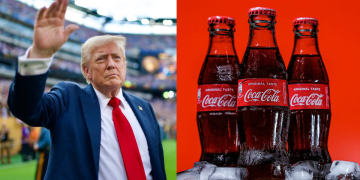Given the current political climate in the U.S., identifying and labeling false news stories is of utmost importance. The current media landscape in the U.S. allows powerful people to illegitimately claim factual news stories are fake news. Meanwhile, conspiracy theories, that have no supporting evidence, proliferate on social media. This has made it difficult for the general public to determine what is fake and what is legitimate. A new AI tool developed at UCLA is hoping to help sort out the mess.
The AI tool can automatically differentiate real conspiracies from fake stories.

The researchers do not deny that some conspiracy theories are real. The key difference between real and fake conspiracies is the amount of support the theory has . Real conspiracy news stories develop slowly. It takes time for journalists to fact check the information and find supporting evidence. Fake conspiracies, on the other hand, can spread quickly because they just depend on trusting the storyteller at their word. Similarly, fake conspiracies are not linked to legitimate sources like real conspiracy stories are.
Fake conspiracy stories are developed online, so you see exactly how they unfold.

Real conspiracies are done in secret, so they are difficult to understand and multiple people are involved. Fake stories are a collection of stories readably available that focus on a grand theory that spans multiple areas. The fake conspiracies also depend on a few key unquestionable actors that have insider knowledge. Without those figures, the story falls apart. For example, Pizzagate was based on real leaked information, but the interpretation depended on trusting a silly code was real.
The AI tool detects fake conspiracies by mapping the communities involved.

In a real conspiracy, the story is limited to one domain. For example, Bridgegate was a real conspiracy by New Jersey Governor Chris Christie to close traffic lanes to punish a political rival. When the researchers created a social network of all those involved in the story, the actors were confined to a single community of people involved in New Jersey politics.
In comparison, when the researchers created a map of those involved in the Pizzagate scandal, the network spanned many communities. There were connections to anti-Semitic communities, communities for alien conspiracies, and child abuse conspiracy communities. Fake theories try to fit within a grand narrative, which builds these connections. Real conspiracies remain within the community of people that were directly impacted.
AI can help us to identify fake stories.

But, realistically, the AI developed at UCLA did not discover an earth-shattering method to detect fake stories. It uses questions that we should all be asking when we read about a conspiracy. Can the information be confirmed? Do you have to trust that someone is right? Is the story being connected to unrelated information?
Critically thinking about everything that we read is exhausting though. If we can integrate more tools to help us find good information we may all be better off.
h/t: PLOS ONE


















































